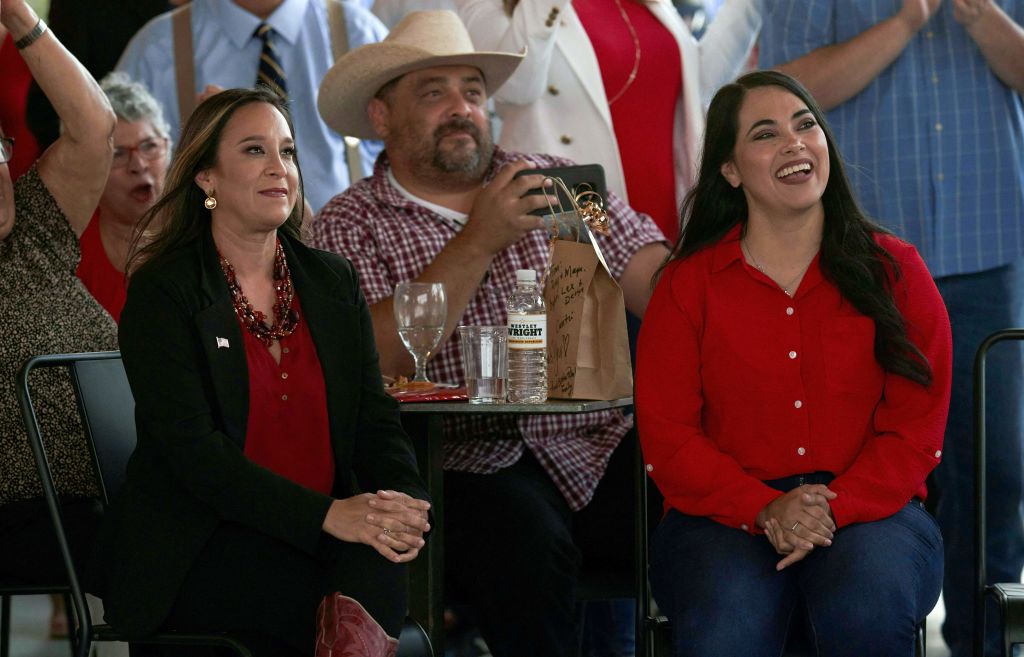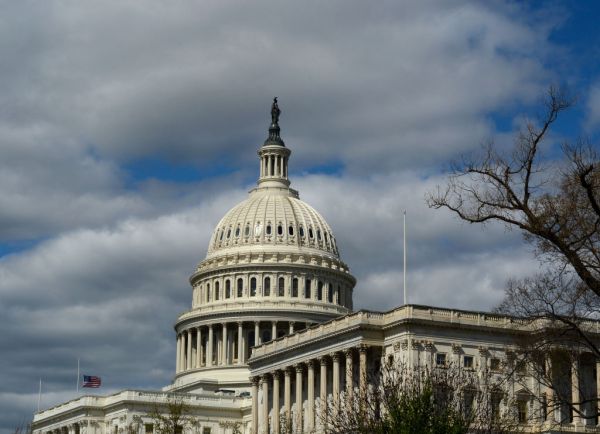Mayra Flores’ nearly 8-point win in a June special election made her the first Republican to represent her south Texas congressional district in more than 150 years. The first Mexican-born woman elected to Congress, Flores campaigned as a Donald Trump-supporting hardcore conservative, touting her hawkish stances on law enforcement and her husband’s work as a U.S. Border Patrol agent.
She’s up for election again in November, competing against Democrat Vicente Gonzalez in Texas’ redrawn (and now bluer) 34th District after Gonzalez—who has represented the nearby 15th District since 2017—opted to run in a new jurisdiction after the 2020 redistricting cycle. The Cook Political Report rates the race as a toss-up.
A Flores win in November would be “a sure sign that the gains Republicans made among Latino voters in 2020 are more durable and less Trump-specific than Democrats had hoped,” Jacob Rubashkin wrote for Inside Elections, a nonpartisan political analysis newsletter.
Though political pundits often lump them together in one bucket, Latino voters in the United States are far from monolithic, running the gamut in terms of socioeconomic status, geographic location, and political persuasion. And with control of Congress hanging in the balance, Republicans hope to dispel the notion that Latinos are a reliably Democratic voting bloc.
The GOP’s optimism is not unfounded, as Democrats’ dominant margins with Latino voters have begun to diminish in recent years. Barack Obama won more than seven in 10 such voters in 2012. About 66 percent of Latinos voted for Hillary Clinton in 2016, and only 60 percent cast a ballot for Joe Biden in 2020.
As Democrats’ numbers receded nationally, Republicans made gains. Trump’s support among Latinos jumped from 28 percent during his first run for the White House in 2016 to 38 percent in his second four years later, when, according to exit polls, he won nearly half of Florida’s Latino vote. A number of longtime Democratic strongholds along the U.S.-Mexico border went red, including Texas’ Zapato County, where 93 percent of residents are Latino.
Several races this year could show whether such support was a blip. Texas’ 15th District, where 80 percent of residents are Latino, is one. GOP candidate Monica de la Cruz faces Democrat Michelle Vallejo, the underdog in the race. And Cassy Garcia, a former Trump administration staffer, is running against Democrat Rep. Henry Cuellar in Texas’ 28th District. The GOP candidates in those races—as well as Flores—have raised over $4 million in the last three months, the Texas Tribune noted. The enthusiasm for the GOP shows some of Trump’s gains among Latino voters, at least in some locations, may be difficult for Democrats to claw back.
Still, Latino voters’ support for Republicans has yet to return to its high water mark in 2004, when 40 percent voted for President George W. Bush’s re-election. And in addition to winning states with large Latino populations like California and New Mexico, Biden’s 2020 campaign still captured 60 percent of the Latino vote in Arizona and Nevada, two key battleground states in November’s midterms where about one in five eligible voters are Latino. Recent polling from the Pew Research Center shows that most Latinos have a more positive view of the Democratic Party than the GOP.
But victories like Flores’ are giving Republicans hope.
“The special election in South Texas, Mayra Flores’ district, I think to me showed that this was more than just a blip on the radar,” said Israel Ortega of The LIBRE Initiative, a conservative grassroots organization that’s “rooted in the Hispanic community.”
“The vote is more competitive,” he added. “Both parties are going to have to work harder to get their vote.”
Few demonstrated this ethos like former GOP Rep. Will Hurd, who represented Texas’ 23rd District from 2015 until his retirement in 2021. “Look, the reason a black Republican continued to win in a 72 percent Latino district is because I showed up to places and I talked about issues people cared about,” he told The Dispatch.
Cable news talking heads may make it seem that immigration is Latino voters’ No. 1 issue. Not so fast, advocates say. “Hispanic voters have largely the same concerns as others: the economy, inflation,” said Mario H. Lopez, president of the Hispanic Leadership Fund. “People just want a chance at the American dream and conditions that make it achievable.”
But that doesn’t mean immigration policy doesn’t matter at all—and Republicans could suffer some self-inflicted wounds if they let the most extreme voices on the issue define the party, moving beyond stricter border enforcement into racial profiling. Trump’s close alliance with and pardon of longtime Maricopa County Sheriff Joe Arpaio—who became notorious for harassing and targeting Arizona’s Latino population with immigration round-ups and was eventually convicted of contempt for defying an order to stop—likely contributed to his loss of the state in 2020.
It should be a cautionary tale, Lopez said. “For Republicans who don’t propagate extremist anti-Latino propaganda about immigrants, refugees, and asylum seekers,” he told The Dispatch, “there is an opportunity to make inroads.”









Please note that we at The Dispatch hold ourselves, our work, and our commenters to a higher standard than other places on the internet. We welcome comments that foster genuine debate or discussion—including comments critical of us or our work—but responses that include ad hominem attacks on fellow Dispatch members or are intended to stoke fear and anger may be moderated.